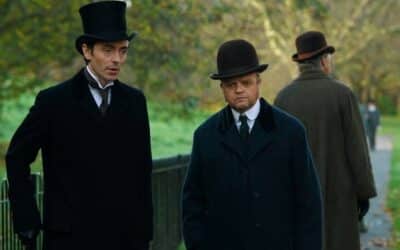
Writing a Historical Mystery
Crafting a historical mystery is like navigating a labyrinth, where every twist and turn reveals a new shadow from the past. The challenge lies in blending the authenticity of history with the intrigue of a mystery, creating a story that feels both timeless and immediate. Here are twelve steps to guide you through the maze of writing a compelling historical mystery.
1. Choose the Right Historical Setting
The foundation of a historical mystery lies in its setting. Select a time period rich in detail and atmosphere. The era should not only fascinate you but also offer a fertile ground for mystery. Whether it’s Victorian London, Renaissance Florence, or post-war New York, the setting must be integral to the plot, almost a character in itself.
2. Immerse Yourself in Research
Dive deep into the history books. Absorb the culture, politics, and everyday life of your chosen period. Authenticity matters. Readers will be transported by the accuracy of your details. Look for primary sources, such as diaries, letters, and newspapers, to capture the language and spirit of the time.
3. Develop Authentic Characters
Your characters must breathe the air of their era. They should speak, think, and act in ways true to their time. A strong protagonist with a clear motivation is essential. Surround them with a cast that reflects the social strata and cultural norms of the period, adding depth and authenticity to your story.
4. Craft a Compelling Mystery
The heart of your story is the mystery. It must be intriguing, with enough twists to keep readers guessing. Start with a gripping hook—an unsolved murder, a missing artifact, or a secret society. Build tension through red herrings and cliffhangers, ensuring that every clue brings the reader closer to the truth while deepening the enigma.
5. Balance Fact and Fiction
Blend historical facts with your narrative seamlessly. Use real events and figures to anchor your story, but don’t be afraid to take creative liberties. The goal is to create a believable world where history and fiction coexist harmoniously, enhancing the plot rather than overshadowing it.
6. Create a Vivid Atmosphere
Atmosphere is crucial in a historical mystery. Use sensory details to bring your setting to life. Describe the sights, sounds, and smells of the era. The clatter of horse-drawn carriages, the scent of coal smoke, the flicker of gas lamps—all these elements immerse the reader in your world.
7. Build Tension and Suspense
Pacing is key. Alternate between moments of high tension and slower, reflective scenes. Keep the stakes high for your protagonist. Each discovery should lead to greater danger or deeper mystery. Use short, punchy chapters to maintain momentum and keep readers on edge.
8. Use Historical Dialogue
Dialogue should reflect the period without sounding stilted. Avoid anachronisms and modern slang. Listen to how people spoke in your era. Use formalities, colloquialisms, and idioms that fit the time, but ensure it’s still accessible to contemporary readers.
9. Incorporate Historical Themes
Every era has its conflicts and themes. Whether it’s class struggle, political upheaval, or cultural shifts, weave these elements into your story. They provide a backdrop that enriches your narrative and makes it resonate on a deeper level.
10. Develop Subplots and Secondary Characters
A rich tapestry of subplots and secondary characters adds depth to your story. These elements should intertwine with the main plot, providing additional clues or red herrings. They also offer opportunities to explore different aspects of your historical setting.
11. Ensure a Satisfying Resolution
A good mystery needs a satisfying conclusion. Tie up loose ends and reveal the truth in a way that feels earned. The resolution should be logical, surprising, and deeply tied to the historical context. It should leave readers with a sense of closure and fulfillment.
12. Edit and Refine with Historical Accuracy in Mind
Revision is where your story takes its final shape. Scrutinize your work for historical accuracy, consistency, and pacing. Ensure that your characters’ actions and dialogue are true to the period. Remove any anachronisms that could break the reader’s immersion.
Example: “The Alienist” by Caleb Carr
Caleb Carr’s “The Alienist” is a prime example of a historical mystery done right. Set in 1896 New York, it follows Dr. Laszlo Kreizler, a pioneer in the new field of criminal psychology, as he investigates a series of gruesome murders. The novel blends meticulous historical research with a gripping plot, immersing readers in the gritty reality of Gilded Age New York.
The characters are vividly drawn, from the determined Sara Howard to the cynical reporter John Schuyler Moore. Carr’s use of real historical figures, like Theodore Roosevelt, adds authenticity to the narrative. The atmosphere is rich with period details, from the opulence of the upper classes to the squalor of the tenements.
Carr’s careful balance of fact and fiction, combined with his ability to build suspense and develop complex characters, makes “The Alienist” a masterclass in historical mystery writing. It’s a book that transports readers to another time, immersing them in a world where the past is as alive as the present.
Writing a historical mystery is an intricate dance between the past and the present. It requires a careful blend of research, creativity, and storytelling prowess. Follow these steps, and you’ll craft a narrative that not only captivates readers but also brings history to life in the most thrilling way possible.
Similar Features
On the Hunt for a Mystery
How to Select Your Next Mystery Book
Querying a Mystery
How to Write a Query Letter That Won’t Get You Ghosted
Crafting the Character
Creating Characters as Mysterious as Your Plot



